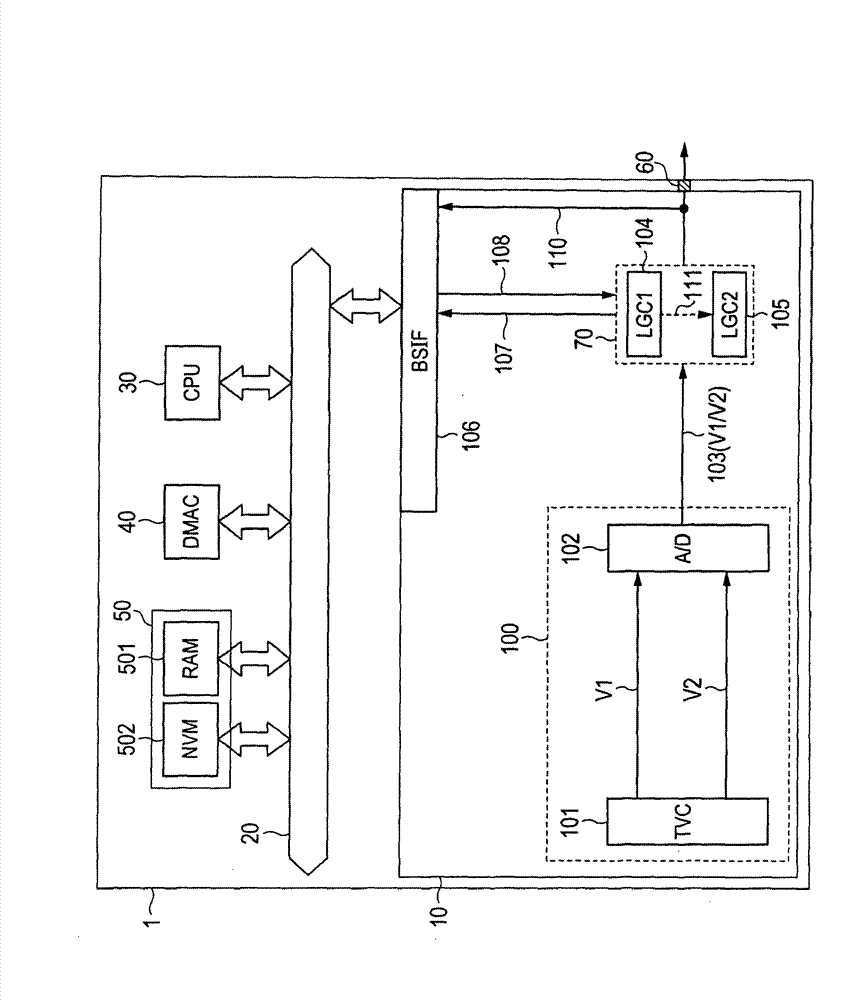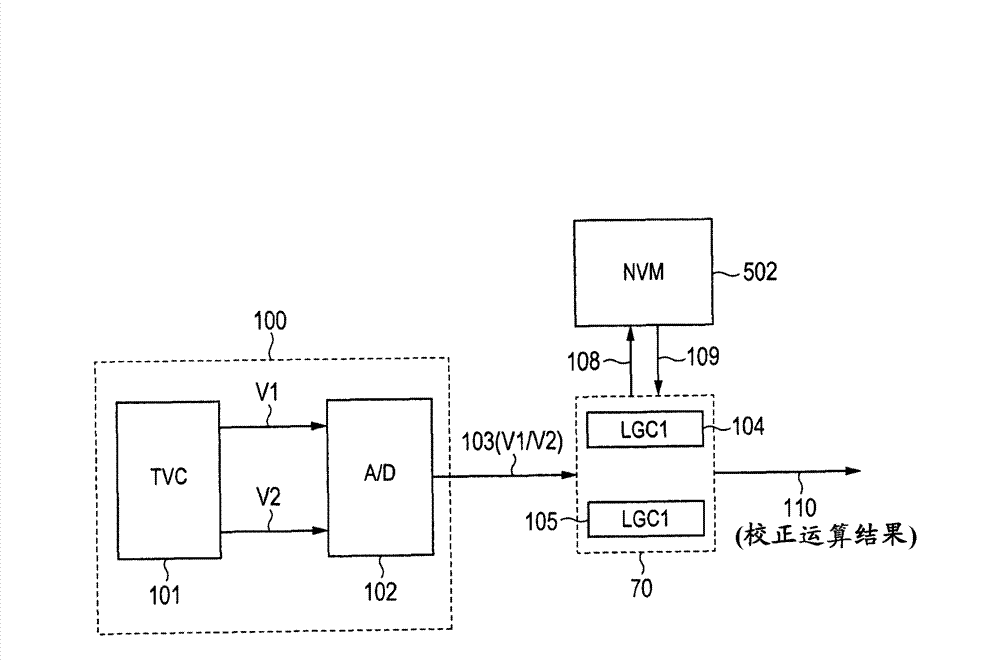Semiconductor device and data generation method
A technology for semiconductors and devices, applied in the field of semiconductor devices and data generation, can solve the problems of reducing the accuracy of temperature detection, and achieve the effect of improving the accuracy of temperature detection and suppressing the number of
- Summary
- Abstract
- Description
- Claims
- Application Information
AI Technical Summary
Problems solved by technology
Method used
Image
Examples
Embodiment 1
[0100] figure 1 is a block diagram showing an example of a microcomputer with a built-in temperature sensor for performing data processing on a vehicle, etc., as one embodiment of a semiconductor device according to the present invention. Although not specifically limited, the figure 1 The microcomputer 1 shown in is formed on a semiconductor substrate (for example, single crystal silicon) by a well-known CMOS integrated circuit manufacturing technique.
[0101] The microcomputer 1 includes a central processing unit (CPU) 30, a temperature sensor 10, a transfer control unit (DMAC (Direct Memory Access Controller)) 40, a memory unit 50, a bus 20, and other peripheral circuits (not shown). The CPU 30 executes engine control and the like of the vehicle and processes data and the like used for the related controls. The CPU 30 causes the temperature sensor 10 to perform temperature measurement by supplying a temperature detection instruction from the bus 20 .
[0102] The memory...
Embodiment 2
[0181] Figure 18 is a block diagram showing an example of a microcomputer with a built-in temperature sensor for performing data processing and the like on a vehicle according to Embodiment 2. Although not specifically limited, the Figure 18 The microcomputer 2 shown in is formed on a semiconductor substrate (for example, single crystal silicon) by a well-known CMOS integrated circuit manufacturing technique.
[0182] As described above, in order to improve the accuracy of the temperature sensor 12, it is necessary to calculate the correction operation coefficient a n -a 0 and perform correction operations. However, it is necessary to test the operation of each function block in the previous stage and check the presence or absence of operation abnormality. Therefore, in order to facilitate the operation test of each function block, the microcomputer 2 according to Embodiment 2 further includes function blocks for operation test in addition to the functions provided in th...
Embodiment 3
[0192] Figure 19 is a block diagram showing an example of a microcomputer with a built-in temperature sensor for performing data processing and the like on a vehicle according to Embodiment 3. Although not specifically limited, the Figure 19 The microcomputer 3 shown in is formed on a semiconductor substrate (for example, single crystal silicon) by a well-known CMOS integrated circuit manufacturing technique.
[0193] In addition to the functions provided in the microcomputer 2 according to Embodiment 2, the microcomputer 3 is also provided with a function for switching the correction operation function according to the temperature range. Specifically, the microcomputer 3 further includes a comparator 123 for determining the temperature range. exist Figure 19 In , the same symbols are attached to the same components as in the microcomputers 1 and 2, and detailed description thereof is omitted.
[0194] As described above, in order to improve the accuracy of the temperat...
PUM
 Login to View More
Login to View More Abstract
Description
Claims
Application Information
 Login to View More
Login to View More - R&D
- Intellectual Property
- Life Sciences
- Materials
- Tech Scout
- Unparalleled Data Quality
- Higher Quality Content
- 60% Fewer Hallucinations
Browse by: Latest US Patents, China's latest patents, Technical Efficacy Thesaurus, Application Domain, Technology Topic, Popular Technical Reports.
© 2025 PatSnap. All rights reserved.Legal|Privacy policy|Modern Slavery Act Transparency Statement|Sitemap|About US| Contact US: help@patsnap.com



